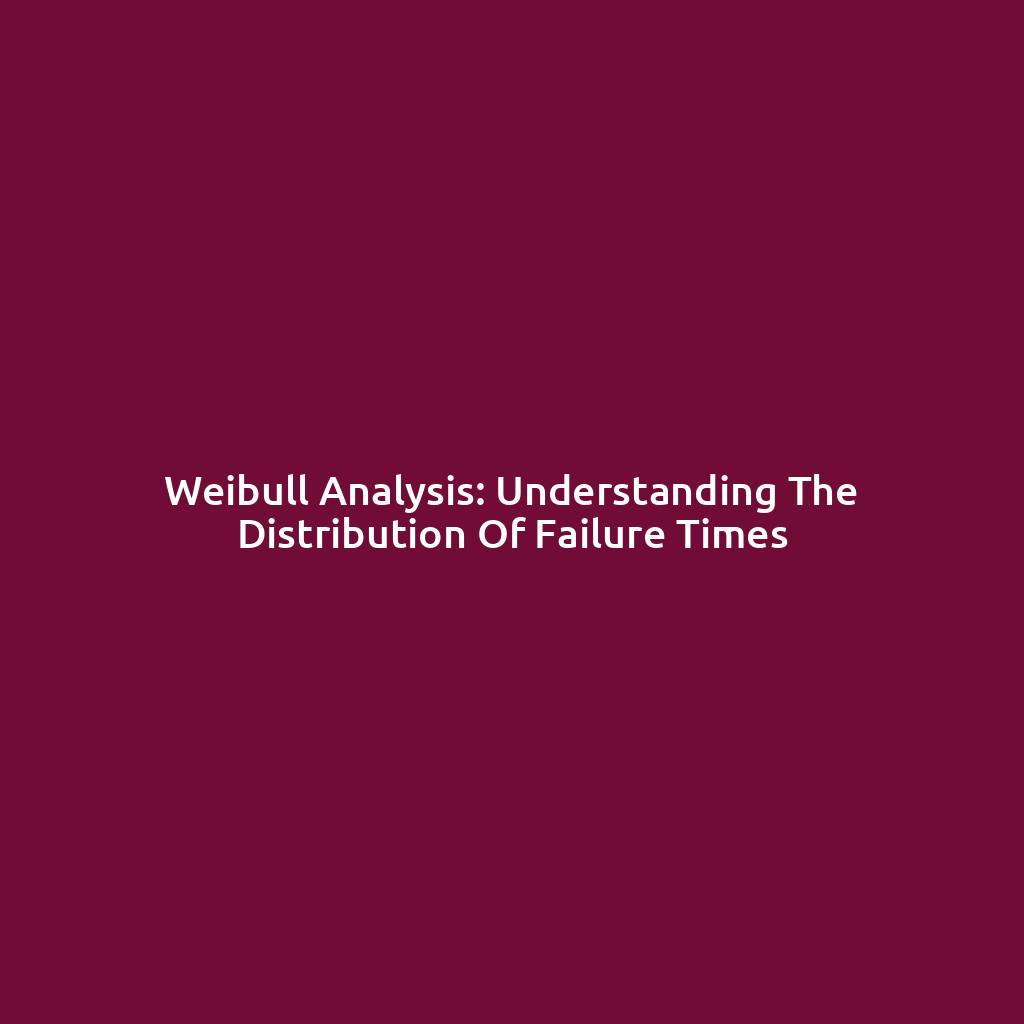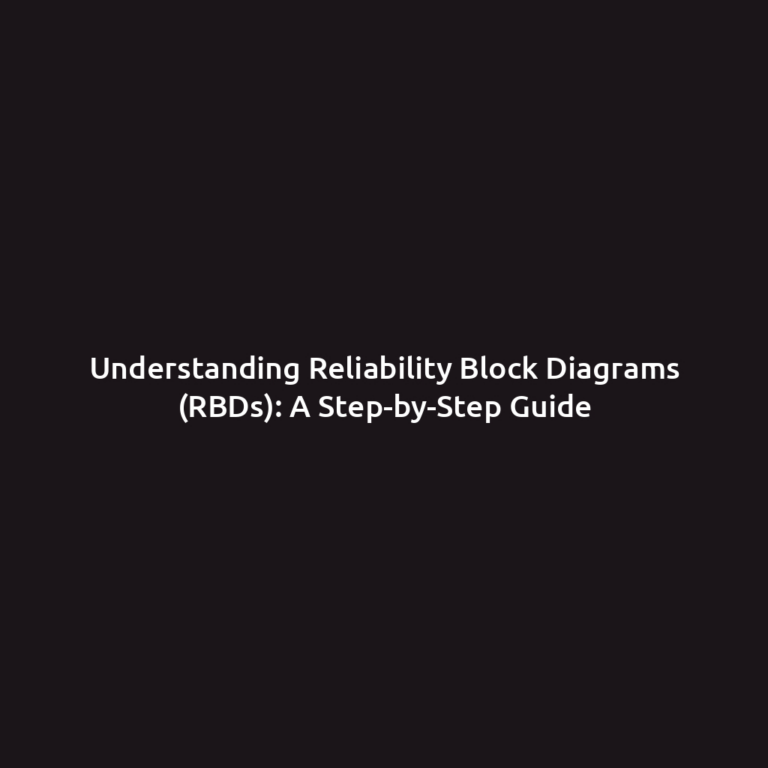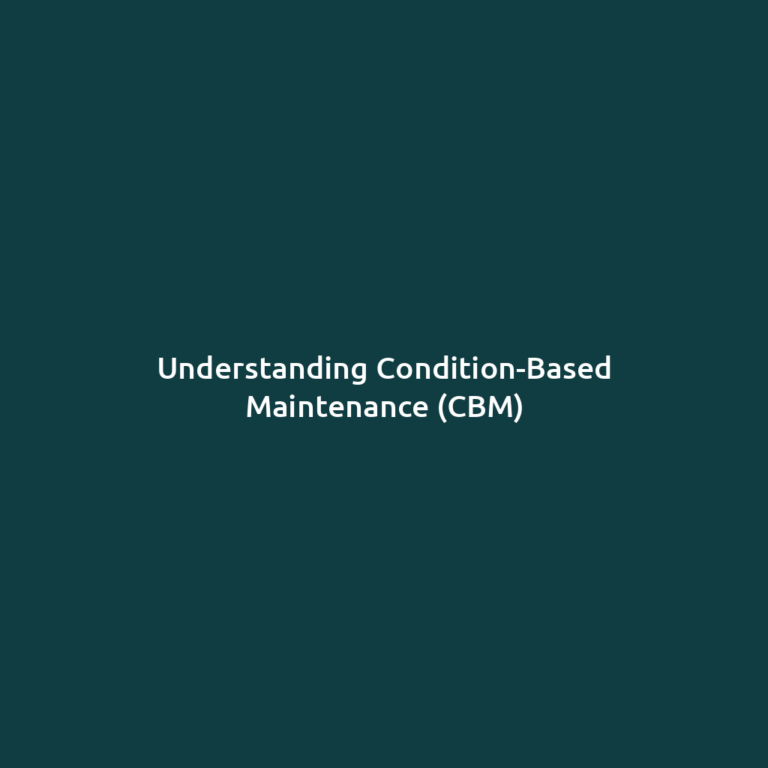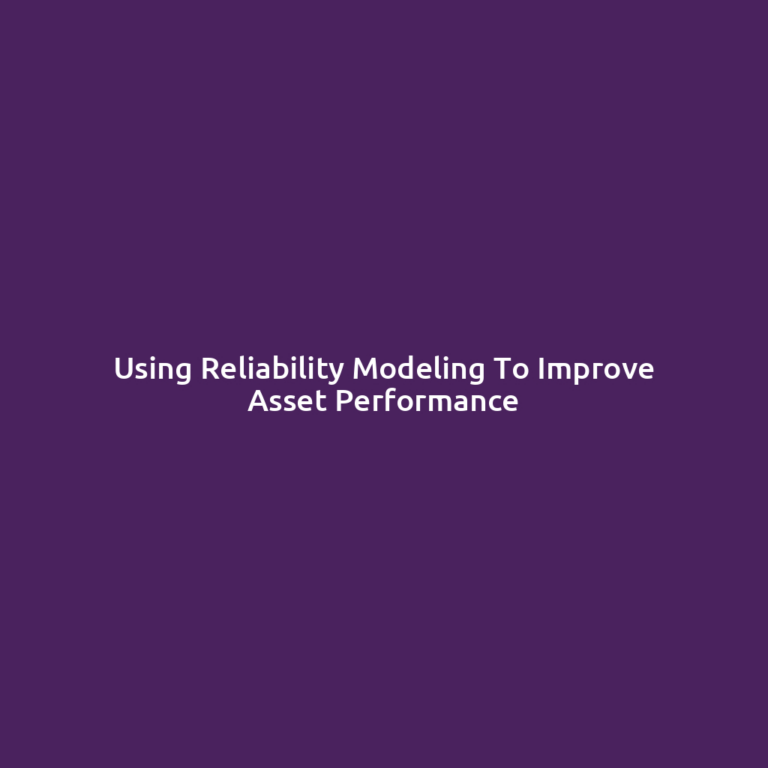Weibull Analysis: Understanding the Distribution of Failure Times
When analyzing reliability and predicting failure times, Weibull analysis offers a robust statistical method to understand the distribution of failure times. This technique, named after Swedish engineer Waloddi Weibull, has become a cornerstone for industries that prioritize reliability, from aerospace to manufacturing.
Weibull analysis doesn’t just throw numbers at you – it tells a story about how things fail and, more importantly, when they’re likely to fail. Let’s dive in to explore how this powerful tool works, why it’s invaluable and how you can use it to solve real-world problems.
At its core, Weibull analysis provides a framework for modeling failure times, helping engineers and decision-makers answer critical questions:
-
How long can a product or component be expected to last?
-
What percentage of items are likely to fail within a specific period?
-
How does the reliability of one design compare to another?
By understanding the distribution of failure times, businesses can reduce downtime, improve designs and save costs. The power of Weibull analysis lies in its versatility-whether failures occur early due to manufacturing defects or later due to wear and tear, the model adapts.
Table of Contents
- 0.1 Breaking Down the Weibull Distribution
- 0.2 How to Perform Weibull Analysis
- 0.3 Life Applications/Use cases of Weibull Analysis
- 0.4 Advanced Concepts in Weibull Analysis
- 0.5 Common Challenges in Weibull Analysis
- 0.6 Enhancing Decision-Making with Weibull Analysis
- 0.7 Tools and Software for Weibull Analysis
- 0.8 Weibull Analysis in a Data-Driven World
- 0.9 Helpful Video Training From PetroSkills
- 1 FAQs About Weibull Analysis
Breaking Down the Weibull Distribution
The beauty of Weibull analysis is that it captures a wide range of failure behaviors through its distribution, defined by two primary parameters:
1. Shape Parameter (β):
This determines the failure rate pattern:
-
β < 1: Failures decrease over time, often seen with infant mortality.
-
β = 1: Failures occur randomly, matching the exponential distribution.
-
β > 1: Failures increase over time, typical for aging or wear-out scenarios.
2. Scale Parameter (η):
This represents the characteristic life-essentially, the time at which 63.2% of items have failed under consistent conditions.
These parameters form the backbone of Weibull analysis, allowing flexibility to model diverse real-world scenarios.
Here’s a comprehensive guide to performing Weibull Analysis:
How to Perform Weibull Analysis
Step 1: Collect Failure Data
The foundation of accurate Weibull analysis lies in comprehensive data collection. Time-to-failure data can be gathered through various methods:
- Laboratory Testing: Conducting accelerated life testing under controlled conditions to simulate long-term wear
- Field Operations: Recording actual failure times during normal product usage
- Historical Records: Analyzing maintenance logs and repair histories
- Sensor Data: Collecting real-time performance metrics from embedded sensors The data must include precise failure times, operating conditions, and failure modes. For suspended or censored data (items that haven’t failed), record the last known operational time.
Step 2: Rank and Plot the Data
Data organization and visualization involve several critical sub-steps:
- Sort failure times in ascending order
- Calculate median rank positions using Bernard’s approximation: (i – 0.3)/(N + 0.4), where i is the failure order and N is the sample size
- Transform the data for Weibull probability plotting using double logarithmic scales
- Plot the transformed data on Weibull probability paper or using specialized software
- Examine the linearity of the plot to verify the appropriateness of the Weibull distribution
Step 3: Estimate the Parameters
The Weibull distribution is characterized by three key parameters:
- Shape Parameter (β): Indicates the failure pattern and mechanism
- Scale Parameter (η): Represents the characteristic life where 63.2% of units have failed
- Location Parameter (γ): Represents the failure-free period (often assumed to be zero)
Parameter estimation methods include:
- Maximum Likelihood Estimation (MLE): Provides the most statistically robust estimates, especially for larger datasets
- Least Squares Method: Useful for graphical analysis and smaller datasets
- Rank Regression: Combines aspects of both methods for balanced results Modern software packages can automatically calculate these parameters while accounting for confidence intervals.
Step 4: Interpret Results
The analysis yields valuable insights based on the parameter values:
Shape Parameter (β) Interpretation:
- β < 1: Indicates infant mortality or early-life failures
- Focus on manufacturing quality control
- Implement burn-in testing
- Review design specifications
- Enhance quality assurance processes
- β = 1: Suggests random failures
- Develop condition monitoring systems
- Implement predictive maintenance
- Review operating procedures
- Consider redundancy in critical systems
- β > 1: Indicates wear-out failures
- Establish preventive maintenance schedules
- Plan component replacement intervals
- Design upgrade programs
- Optimize spare parts inventory
Scale Parameter (η) Applications:
- Determines optimal maintenance intervals
- Calculates warranty period recommendations
- Estimates spare parts requirements
- Projects life-cycle costs
Additional Analysis Steps:
- Reliability Function Analysis
-
- Calculate probability of survival at specific times
- Determine design life expectations
- Set maintenance intervals
- Establish warranty periods
- Hazard Rate Analysis
-
- Identify critical failure periods
- Optimize maintenance strategies
- Plan resource allocation
- Develop risk mitigation plans
- Confidence Interval Assessment
-
- Evaluate statistical uncertainty
- Make risk-informed decisions
- Set safety margins
- Determine sample size requirements
- Comparative Analysis
-
- Benchmark against similar products
- Evaluate design improvements
- Compare different manufacturers
- Assess maintenance strategy effectiveness
The results should be documented in a comprehensive report including:
- Raw data and analysis methods
- Parameter estimates with confidence intervals
- Reliability predictions and recommendations
- Maintenance and replacement strategies
- Economic implications and cost-benefit analysis
This systematic approach to Weibull analysis provides a robust framework for reliability engineering decisions and maintenance planning across various industries and applications.
Life Applications/Use cases of Weibull Analysis
Weibull analysis isn’t confined to academic circles – it’s a workhorse in industries like:
Here’s a detailed descriptive analysis of Weibull analysis applications across industries:
- Aerospace Engineering: The aerospace industry implements Weibull analysis as a cornerstone of safety and reliability engineering. Aircraft turbine blades undergo extensive statistical analysis to predict potential failures before they occur. Maintenance schedules are meticulously calculated using reliability data gathered from thousands of flight hours. Engine components receive particular attention, with detailed analysis of bearings, seals, and compressor blades forming the basis of preventive maintenance programs. Structural elements such as fuselage panels and wing spars are continuously monitored through Weibull-based fatigue life predictions. The analysis becomes especially crucial when dealing with composite materials, where it works in conjunction with damage tolerance analysis to ensure structural integrity throughout the aircraft’s service life.
- Electronics Manufacturing: Electronics manufacturers harness Weibull analysis throughout the product lifecycle, from development to warranty planning. Semiconductor reliability assessment forms a critical part of quality control, with manufacturers analyzing microprocessor lifetimes and memory chip failure patterns. In consumer electronics, the analysis helps predict battery life degradation and screen durability, enabling manufacturers to provide accurate warranty terms. Production line monitoring benefits from real-time Weibull analysis, optimizing burn-in testing periods and component stress assessments. This comprehensive approach helps manufacturers balance cost considerations with reliability requirements while maintaining high quality standards.
- Automotive Industry: Automotive engineers employ Weibull analysis across various vehicle systems to ensure reliability and safety. Powertrain components undergo rigorous lifetime analysis, including detailed studies of engine wear patterns and transmission system durability. Safety systems receive particular attention, with brake systems and airbag deployment mechanisms analyzed for reliability throughout the vehicle’s expected lifetime. Structural components, including body panels and chassis elements, are evaluated using Weibull distributions to predict potential failure points. This analysis helps manufacturers optimize maintenance schedules and warranty programs while ensuring vehicle safety and reliability.
- Logistics Industry: The logistics sector utilizes Weibull analysis to optimize operations across multiple facets of the supply chain. Fleet management benefits from predictive maintenance scheduling, enabling companies to maximize vehicle uptime while minimizing unexpected breakdowns. Warehouse operations rely on Weibull-based reliability predictions for critical equipment such as forklifts and automated storage systems. Distribution networks optimize their performance through analysis of delivery times and route reliability. Additionally, packaging material performance is assessed using Weibull analysis to ensure proper protection of goods throughout the supply chain. This comprehensive approach helps logistics companies maintain efficient operations while managing maintenance costs effectively.
Advanced Concepts in Weibull Analysis
For seasoned analysts, Weibull analysis opens doors to advanced techniques:
1. Three-Parameter Weibull Distribution
Adding a location parameter shifts the distribution to account for a delay before failures begin, useful in specific scenarios.
2. Reliability Growth Models
By integrating Weibull analysis with growth models organizations can track how reliability improves over successive product iterations.
3. Competing Failure Modes
In complex systems, multiple failure modes may coexist. Weibull analysis can disentangle these effects to identify dominant causes of failure.
Common Challenges in Weibull Analysis
While Weibull analysis is powerful, it’s not without its pitfalls:
-
Small Sample Sizes: Limited data can skew results making parameter estimation tricky.
-
Assumption of Homogeneity: Real-world data often deviates from ideal conditions, necessitating robust preprocessing.
-
Overfitting: Adding too many parameters can lead to models that fit the data but fail to generalize.
Understanding these challenges helps practitioners apply Weibull analysis more effectively.
Enhancing Decision-Making with Weibull Analysis
Weibull analysis provides a structured way to answer critical reliability questions:
-
How long will a system last under specific conditions?
-
What’s the optimal time for preventive maintenance?
-
How do different designs or materials compare in terms of reliability?
These insights translate to better decisions, from design optimization to inventory management.
Tools and Software for Weibull Analysis
Modern tools make Weibull analysis accessible, even for non-experts. Popular options include:
-
ReliaSoft Weibull++
-
Minitab
-
MATLAB
-
Excel (with add-ons)
These platforms streamline data analysis, enabling quicker insights.
Weibull Analysis in a Data-Driven World
As industries embrace big data and IoT, Weibull analysis remains a cornerstone for reliability engineering. Imagine a world where predictive maintenance is driven by real-time data from connected devices. Weibull analysis, combined with machine learning, promises unparalleled reliability insights.
Weibull analysis isn’t just a tool-it’s a lens through which we view reliability and failure. By understanding the distribution of failure times, businesses and engineers can make informed decisions that drive performance and safety.
This timeless technique continues to evolve, proving its relevance in an ever-changing world. Whether you’re a seasoned reliability engineer or a curious learner, mastering Weibull analysis unlocks a new level of understanding in the science of failure.
Helpful Video Training From PetroSkills
FAQs About Weibull Analysis
1. What is Weibull analysis used for?
Weibull analysis is used to study and model the distribution of failure times for products, systems or components. It helps identify patterns in failures, predict reliability and optimize maintenance schedules.
2. How does Weibull analysis differ from other reliability models?
Weibull analysis stands out because of its flexibility. It can model various failure behaviors – whether early failures, random failures or aging-related wear-out-by adjusting its shape parameter (β).
3. What are the key parameters in Weibull analysis?
The two main parameters are:
-
Shape Parameter (β): Determines the failure rate behavior.
-
Scale Parameter (η): Represents the characteristic life or the time by which 63.2% of items have failed.
4. Can Weibull analysis handle censored data?
Yes, Weibull analysis can incorporate censored data such as test samples that didn’t fail during the testing period. This makes it ideal for real-world scenarios where not all items fail.
5. What industries commonly use Weibull analysis?
Weibull analysis is widely used in aerospace, automotive, electronics and manufacturing industries. It’s also applied in healthcare, finance and other fields where reliability and risk analysis are critical.
6. How can I determine if my data fits a Weibull distribution?
A Weibull probability plot is a common method. If the data points align closely with a straight line, it indicates that the data follows a Weibull distribution.
7. What tools are available for Weibull analysis?
Popular tools include:
-
ReliaSoft Weibull++
-
Minitab
-
MATLAB
-
Excel (with statistical add-ons)
These tools simplify parameter estimation and plotting.
8. Can Weibull analysis predict future failures?
Yes, Weibull analysis can estimate future failure probabilities based on the shape and scale parameters, making it a vital tool for predictive maintenance.
9. Is Weibull analysis limited to physical systems?
No, Weibull analysis is versatile and can be applied beyond physical systems. It’s used in software reliability, financial risk assessment and even project management.
10. What challenges should I watch out for in Weibull analysis?
Common challenges include:
-
Limited data availability, which can skew results.
-
Overfitting when using advanced models.
-
Assuming homogeneity when failure modes vary significantly.
Understanding these pitfalls ensures more accurate and reliable analyses.






3 Comments